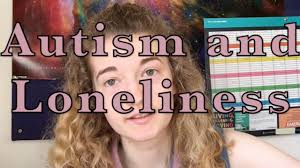Many people think that those who are on the autism spectrum are unable to be treated online, that they have to be seen in person for such a serious condition. The truth is, online therapy is actually better than face to face therapy for autistic youth because they typically do not like to be around a lot of people (such as in a psychiatrist’s office) and can relate better to a computer than to people. All forms of autism affect the patient’s communication and sensory development, which can cause a major meltdown in a child who gets overwhelmed out in public.
What is Autism Spectrum Disorder?
Approximately one in every 68 children in the United States are affected by some form of autism spectrum disorder. Boys are more likely to have autism than girls, with one in every 54 boys in the United States being affected and only one in 252 girls. So, how do you know if your child is autistic? There are many symptoms, which is why they call it a spectrum. The most common signs of being on the autism spectrum include:
Lack of eye contact
Antisocial behavior (playing alone rather than with others)
Does not like to be cuddled or touched
Lack of emotions
Repetitive movements or acts
Inability to communicate verbally
Does not respond to their name
Appears to be in his/her own world
Rocking or flapping hands
Obsession over a certain toy or activity
Tantrum like behavior if routine is disturbed
Does not like loud noises or specific materials
Will not eat certain foods
Treating Autism
Any parent of an autistic child knows exactly what we are referring to when we talk about the meltdown that your child has if they are out of their comfort zone or become overstimulated. Some of the best treatments for those who are on the autism spectrum include applied behavior analysis, cognitive behavioral therapy, and sensory development therapy. All of these can be done online. In fact, these are best done at home where the patient feels most comfortable, so being able to use video chat or video conferencing with a therapist is a wonderful benefit to online therapy.
Applied Behavior Analysis
This type of treatment has been used since the 1960s. It teaches living skills, work and social skills, self-care, communication, proper play behavior, and reducing behavior problems. The therapist can do all of this online by breaking down each skill into smaller steps and repeated until they are mastered. This works with all forms of autism including Asperger’s syndrome.
Cognitive Behavioral Therapy
Cognitive behavioral therapy is helpful in regulating emotions, improving behavior, and developing impulse control. This form of treatment is done by addressing the child’s emotions and helping them learn how to control their behavior. The therapist teaches them to become familiar with their feelings and how to better show their emotions. This is all done online in the comfort of your own home.
Sensory Enrichment Therapy
This form of therapy is actually more effective when done online than in the more traditional face to face treatment. A clinical study of treatment outcomes in sensory enrichment therapy showed that not only did this therapy work well for all forms of autism but it also was effective in those who were diagnosed at an older age. This is promising because many treatments are not as effective once the patient reaches a certain age. The treatment involves exercises that stimulate senses such as motor systems, balance, visual, tactile, and olfactory.




